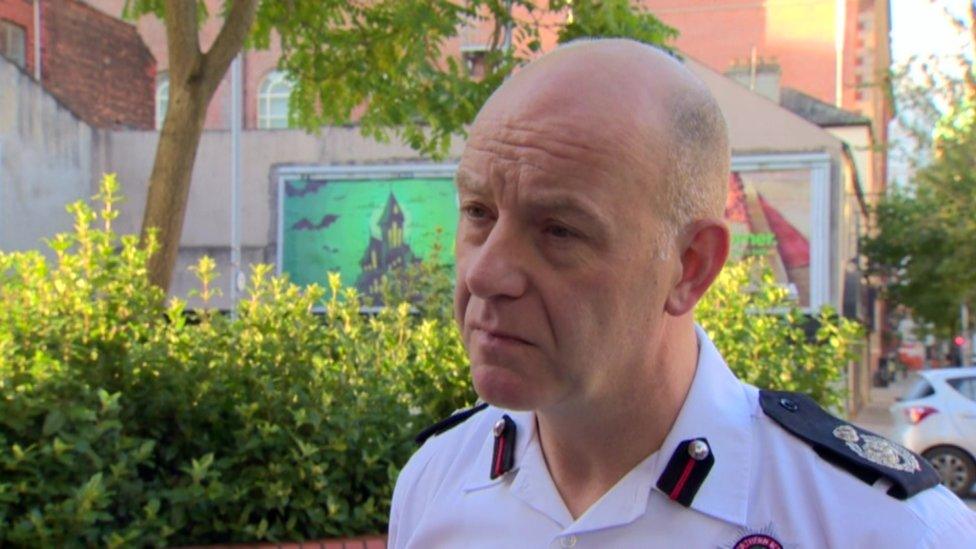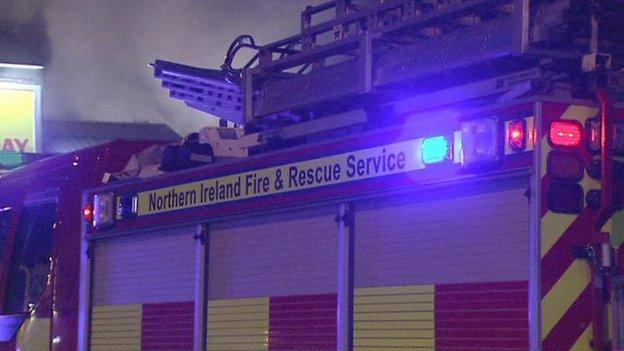Accidental house fires claim lives of 28 people in NI in last three years
- Published

Officers attended 2,500 accidental fires during the past three years
Almost 30 people have died in accidental house fires in Northern Ireland in the past three years.
The figures were released by the Northern Ireland Fire and Rescue Service at the launch of fire safety week.
Officers attended 2,500 accidental fires during that period with cooking or cooking appliances responsible for the majority of fires.
The public is being asked to pay attention to fire safety precautions.
"Cookers, ovens, hotplates, grill pans, deep fat fryers, microwaves and toasters, all commonly used appliances, have accounted for the highest cause of accidental house fires in the last three years," said Assistant Chief Fire Officer Alan Walmsley.

Assistant Chief Fire Officer Alan Walmsley said the majority of accidental fires in the home could be avoided
"Similarly electrics, such as the mains supply, lighting and cables along with other appliances like washing machines, dishwashers and tumble dryers are the second biggest cause.
"Cigarettes, matches and lighters and indeed the misuse or careless disposal of these are the third biggest cause of accidental house fires."
Precautions
Mr Walmsley said when it came to fatalities, smoking materials were the biggest cause with 13 people losing their lives over the three years.
He said the majority of accidental fires in the home could be avoided with the correct fire safety precautions.

Mr Walmsley said when it came to fatalities, smoking materials were the biggest cause with 13 people losing their lives over the three years
"I'm urging householders to use this week as an opportunity to revisit their fire safety to help 'STOP Fire', " he said.
"'STOP Fire' is an easy to remember fire safety tool for everyone to use.
"It's an instant check list focusing on fire safety basics - Smoke alarms, Test them, Obvious fire safety dangers and Planned escape routes. This enables everyone to quickly decide what fire safety actions they need to take to help keep them fire safe.
- Published12 January 2015
